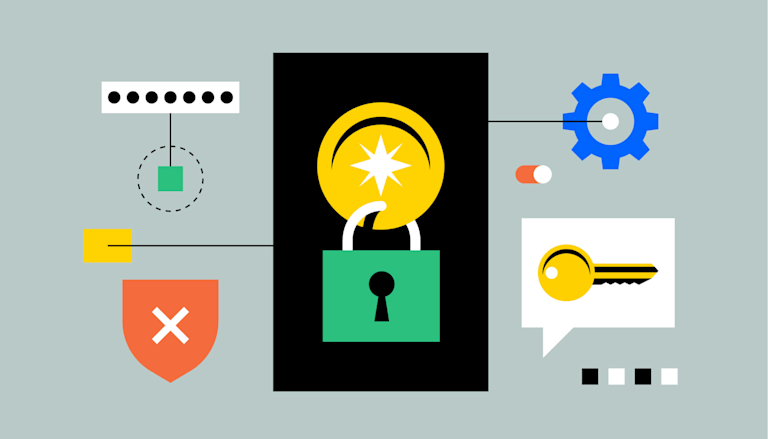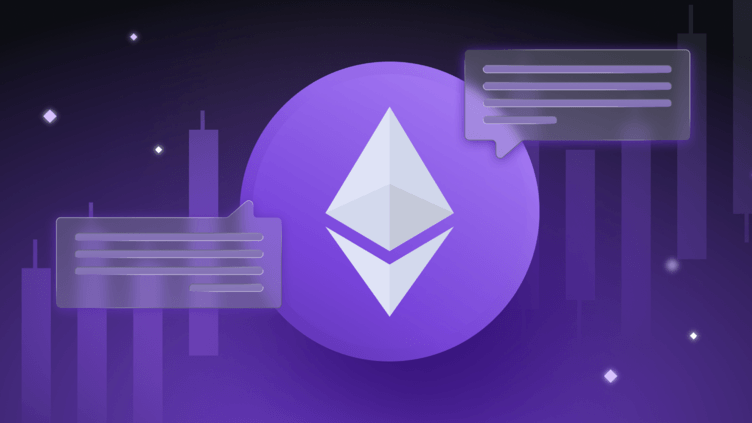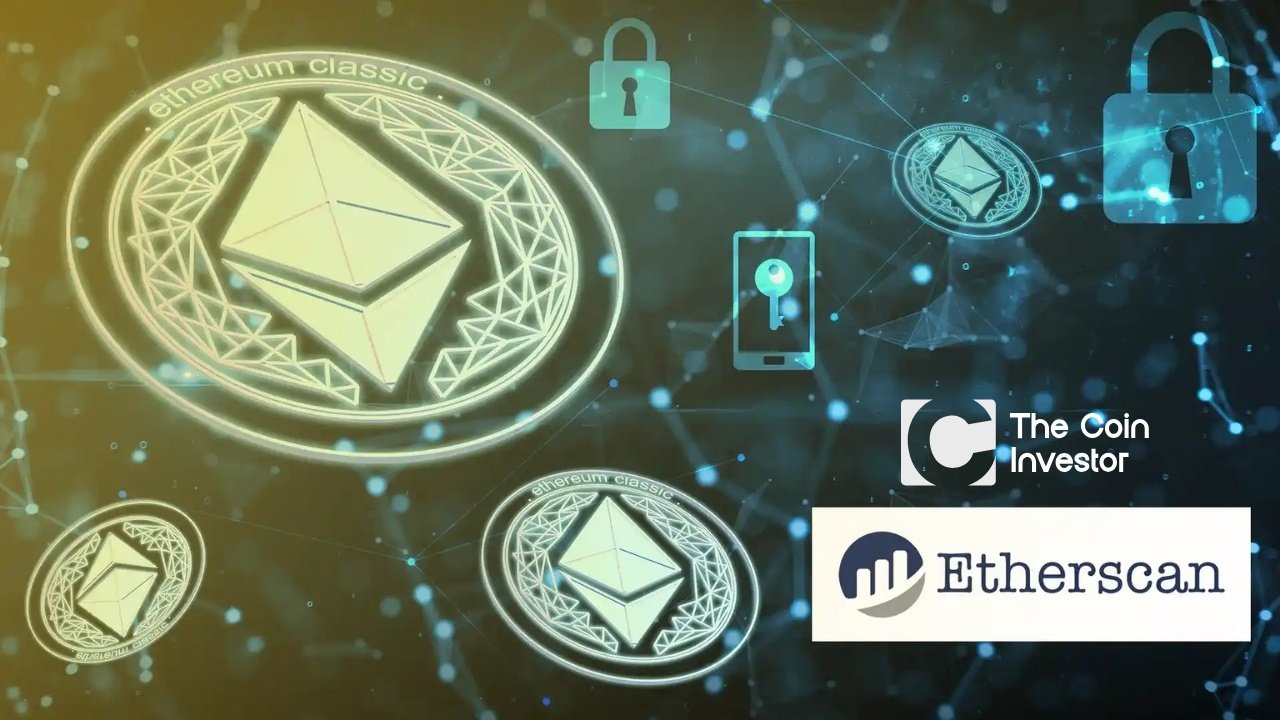In the digital asset revolution, transparency is a cornerstone of trust.
For any investor in the crypto space, particularly on the Ethereum network, the ability to verify transactions and access public data is fundamental. This is where a powerful tool comes into play, acting as a window into the entire Ethereum blockchain.
This tool demystifies the complex flow of digital assets, providing clear, actionable insight. It allows every user, from beginner to expert, to track, verify, and analyze activity on the blockchain.
The platform we are referring to is Etherscan, the leading block explorer for the Ethereum ecosystem. It stands as a testament to the open and auditable nature of the blockchain, empowering users with direct access to unfiltered ethereum data.
This guide will provide a thorough look at Etherscan, its features, and how you can use it to monitor your crypto assets and make informed decisions.
Etherscan and Its Role in Crypto Tracking
![]()
What Is Etherscan?
Etherscan is a tool for looking up data on the Ethereum blockchain. It works like a search engine for Ethereum. Users can check any transaction on the network. This includes ETH transfers, token moves, smart contract uses, and new blocks.
Etherscan shows this data in a simple way. You do not need an account or wallet to use it; all the info is public. You can check the status of transactions, view wallet amounts, or study smart contracts here. Etherscan is the best place for clear details about what happens on Ethereum.
Why Etherscan Matters for Beginners?
For new users in crypto, the Ethereum network may feel hard to understand. Etherscan makes this easier. It gives a clear look at blockchain actions. It builds trust by allowing users to check transactions on their own. After you send ETH from your wallet, you can copy the transaction ID. Then, paste it into Etherscan to see details. You can find sending and receiving addresses, amounts sent, and gas fees.
This tool is key for checking where your crypto goes. It also helps users learn more about crypto. Watching transactions on Etherscan helps people know the Ethereum network better. This promotes a smart way to manage their crypto assets.
How Etherscan Works?

Etherscan operates by running its own Ethereum nodes, which allows it to have a complete and up-to-date copy of the entire Ethereum blockchain. When a transaction is made on the Ethereum network, it gets broadcast to nodes. Etherscan’s nodes pick up this information, index it, and store it in a massive, searchable database.
When you use the search bar on the Etherscan website to look up a wallet address, transaction hash, or contract address, the platform queries its database to pull all the relevant Ethereum data.
This info is then organized and presented through its user-friendly interface.
The platform also provides additional layers of analytics and information through its API, which developers can use to build other applications. The beauty of Etherscan is that it doesn’t just show raw data; it decodes and organizes it with helpful labels, tabs, and charts.
This makes the vast amount of info on the Ethereum blockchain accessible and useful for the average user, not just for developers. It’s a read-only gateway to the blockchain, ensuring that you can look at everything without ever putting your assets at risk.
Core Features of Etherscan Explained

Wallet Tracking and Transaction History
Etherscan has a strong feature that helps you track any public Ethereum wallet. You just need to enter the wallet address in the search bar. Then, you can see its ETH balance and total value of ERC-20 tokens. The main page of the wallet shows a detailed history of all transactions.
This history includes incoming and outgoing transactions. Each entry shows the transaction hash, block number, date, sender, and receiver addresses. It also lists transferred amounts and gas fees. This feature is important for keeping records and confirming payments. It helps with watching wallet activity too. You can also check internal transactions started by smart contracts.
There are organized tabs that make it easy to navigate.
Exploring Token and NFT Information
Etherscan is not just for tracking ETH; it’s also an indispensable tool for researching any token built on the Ethereum blockchain.
Every ERC-20 token has its own page on Etherscan, accessible by searching for the token name or its contract address. On this page, you can find vital info such as the total supply of the token, the number of holders, and a complete list of every transfer of that token.
This is vital for due diligence before investing in a new crypto asset. You can analyze holder distribution to see if a token is overly concentrated in a few wallets. You can also click through to the token’s smart contract page.
Here, you can find the official contract address, which is important for adding the token to your Ethereum wallet, like MetaMask, without accidentally adding a fake one.
Similarly, Etherscan supports NFTs (ERC-721 and ERC-1155 tokens), allowing you to view an NFT’s transaction history, its smart contract, and details about its creation and ownership. This makes Etherscan a comprehensive analytics platform for the entire Ethereum token ecosystem.
How to Use Etherscan to Track Your Crypto?

What You Need to Get Started With Etherscan?
To begin using Etherscan to track your crypto, you need very little. The primary piece of info required is a public Ethereum wallet address or a transaction hash. This could be your own ethereum wallet address, the address of someone you’ve transacted with, or the contract address of a token or smart contract you’re interested in. You do not need to create an account, log in, or connect your wallet. Etherscan is a public utility designed for open access to blockchain data. Its purpose is to provide transparency, so all you need is the public identifier for the info you wish to view.
Step 1: Accessing Etherscan and Searching for a Wallet Address
The first step is to go to the Etherscan website. At the top of the homepage, you will prominently see the main search bar. This is your portal to the entire Ethereum blockchain. Take your public Ethereum wallet address—a long string of characters starting with “0x”—and copy it. Paste this wallet address directly into the search bar and press Enter or click the search icon. Etherscan will immediately process your request and take you to a dedicated page that contains all the public info associated with that specific Ethereum address. This same process works for any public wallet address on the Ethereum network.
Step 2: Viewing and Understanding Your Transaction Details
Once you are on the page for your wallet address, you will see a summary of the wallet, including its ETH balance. Below this, you’ll find a series of tabs, with the default one being “Transactions.” This section displays your complete transaction history. Each row is a different transaction. You will see columns for the Transaction Hash, Block, Age, From, To, Value (the amount of ETH), and the [Txn Fee] (gas fees).
If you sent ETH, your wallet address will be in the “From” column. If you received ETH, it will be in the “To” column. Clicking on any individual transaction hash will give you even more detailed info about that specific transaction, including the exact gas fees paid and the status of the transaction (Success, Fail, or Pending). This detailed view is how you can confirm every aspect of a crypto transfer on the blockchain.
How Do You Use Etherscan to Look Up A Transaction?

If you want to check the status of a specific transaction, the most direct method is to use its unique transaction hash (often abbreviated as Txn Hash or TxID). After you make a transaction from your Ethereum wallet, the wallet interface will usually provide you with this hash. Copy the entire hash. Navigate to the Etherscan website and paste this hash into the main search bar.
Etherscan will pull up a page dedicated solely to that transaction. Here, you will find all the critical info: the status (confirming if it was successful), the block number it was included in, the timestamp, the sending and receiving wallet addresses, the amount of ETH or token transferred, and the gas fees incurred. This is the definitive way to verify that a transaction on the Ethereum network has been completed and recorded on the blockchain.
Conclusion
Etherscan is more than just a block explorer; it is an essential pillar of the Ethereum ecosystem that champions transparency and empowers users. It provides the tools for anyone to audit the Ethereum blockchain, track their crypto assets with precision, and perform due diligence on any token or smart contract.
By presenting complex blockchain data in an accessible interface, Etherscan gives all participants in the crypto economy—from individual investors to large-scale developers—the info they need to operate with confidence. Its existence reinforces the open and trustless nature of the blockchain, making it a fundamental resource for anyone serious about investing and participating in the future of finance on the Ethereum network. Using this platform is a key step toward making data-driven decisions with your crypto.
FAQ’s:
How Do I Read Etherscan?
Etherscan is easy to use. You can find key data points in its simple layout. When you look at a wallet address, check the ETH balance first. Then, look at the transaction history found under the “Transactions” tab. For each transaction, pay attention to the “From” and “To” addresses. This helps you see where the ETH went and where it came from. Also, note the “Value.” This shows how much ETH moved in that transaction. Don’t forget the “Txn Fee,” which tells you about gas fees. On each transaction page, you will see a “Status” field. This shows if the transaction worked or not. There are also extra tabs for token transfers and smart contract calls related to that wallet.
How to Use Etherscan to Look Up A Smart Contract?
To look up a smart contract, you need its contract address. You can usually find this address on the official website of the project associated with the smart contract. Paste the contract address into the Etherscan search bar. This will take you to the smart contract page.
Here, you will find several tabs. The “Contract” tab is especially useful, as it often shows the verified source code of the smart contract. You can also view the transaction history of the contract, read its functions, and analyze all the crypto interactions involving that specific smart contract on the Ethereum blockchain.
How Can I Use Etherscan to Make Money?
Etherscan is not a trading platform, but the analytics and info it provides can be leveraged for investment strategies.
Advanced users track the wallet address of large holders (often called “whales”) to see when they are accumulating or selling a particular token. Monitoring the transaction history of a project’s smart contract can provide insight into its activity and adoption. You can also use Etherscan to analyze token distributions and identify new, potentially promising projects. This data-driven approach, based on real Ethereum data, can inform smarter buying and selling decisions in the crypto market. It is a powerful analytics tool for your crypto strategy.
Is Etherscan Safe to Use For Tracking My Crypto?
Yes, Etherscan is completely safe to use for tracking your crypto. It is a read-only block explorer. T
his means you are only viewing public information that is already stored on the Ethereum blockchain. You do not enter any private keys, passwords, or sensitive personal info. The platform cannot access or move funds from your Ethereum wallet.
Using Etherscan is as safe as using a public search engine; it’s a tool for information retrieval, not for executing transactions.
Does Using Etherscan Require Connecting My Wallet?
No, using Etherscan does not require connecting your wallet. You never need to link your Ethereum wallet (like MetaMask or Trust Wallet) to Etherscan to access its features.
All you need is a public key, such as your ethereum wallet address, a transaction hash, or a smart contract address, which you can paste into the search bar. The platform is designed to provide access to public blockchain data without requiring any permissions that could compromise the security of your crypto assets. Your wallet and its funds remain entirely separate and secure.
